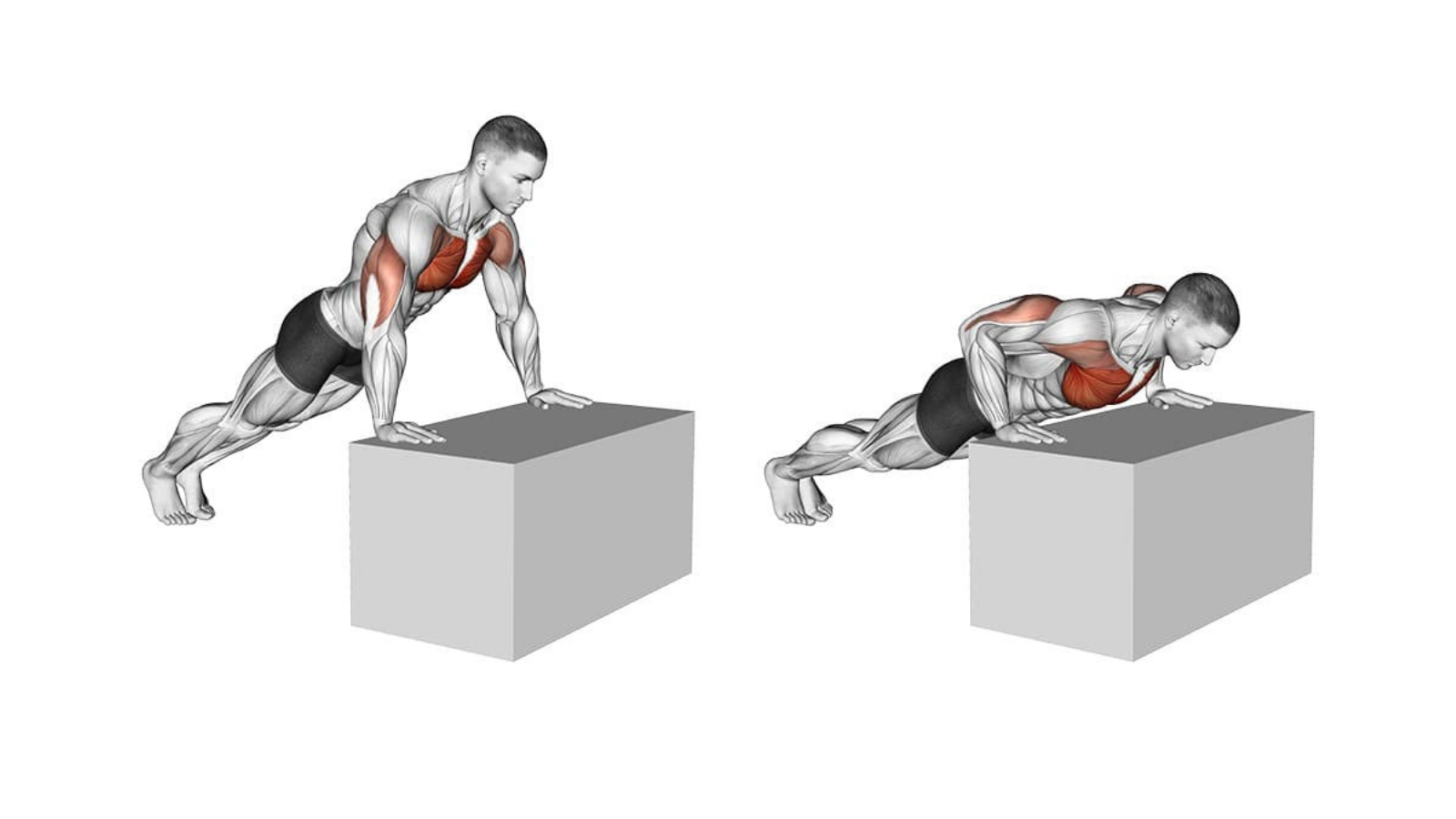The Push-Up Solution
Push-ups are simple yet effective to build strength and muscle. You can do them anywhere with enough space to fit the length of your body.
Many of my clients got locked down at home with no equipment when gyms closed last year. Push-ups were useful to fill the void and target different upper body muscles.
This article presents 10 variations to maximize the timeless exercise.
1/ Standard
The standard position has both hands flat with your fingers pointed straight ahead, placed right under your shoulders. Keep your elbows at 45 degrees with your body.
You get a good balance of chest, deltoid, and triceps.
Now, varying this standard position will emphasize different muscles
2/ Incline
The Incline Push-up decreases the range of motion, so it's easier when you lack the strength for the standard variation.
You can use any elevated surface, from a bench to a cardio step, or even a wall. It's also great to add extra reps to your sets once you fatigue in the standard variation.
3/ Negatives (Eccentric)
This variation focuses on the negative phase of the movement. You take 4-6 seconds to lower yourself, then help yourself back to the top.
This method is effective for developing the strength needed for the Standard Push-up. You can also do it on an incline.
4/ Decline
The Decline variation has your feet higher than your hands. This position is harder, and emphasizes the upper chest and the front deltoids.
5/ Deep
Deep Push-ups work your push muscles through their full range of motion. You can use parallette bars, a bench, or dumbbells.
The bottom position is an excellent stretch for your chest and your shoulders. I often prescribe Incline Deep Push-ups for clients with chronic shoulder or neck pain.
6/ Knuckles
According to a study published in the Journal of Kinesiology and Electromyography, this variation significantly increases the load on your:
- Biceps
- Wrist extensors
- Supraspinatus (rotator cuff)
- Upper traps
- Pec major (sternal and clavicular heads)
7/ Hands Above Standard Shoulder Level
This variation is useful to fix scapular winging as it decreases the work on the pecs and increases the need for shoulder-blade stability from the Serratus anterior muscle.
Placing your hands ahead of your shoulders increases the load on your:
- Triceps
- Supraspinatus
- Upper traps
- Rear deltoids and serratus anterior
8/ Hands Below Standard Shoulder Level
Hand placement inferior to your shoulders increases the load on your:
- Front and mid deltoids
- Pec major (sternal head)
- Infraspinatus (rotator cuff)
- Lower traps
9/ Externally Rotated Hands
Outward-pointed hands increase the load of your biceps. This variation is excellent if you seek to add some mass to your arms.
10/ Unilateral
Last but not least, the One-Arm Push-up. You feel the muscles between your ribs, along with your abs and your glutes. Everything is intensified.
A bunch of my joints along my spine/rib cage popped like bubble wrap the first time I did them, it felt amazing. Start with an incline variation to develop the basic strength, then move on to the real deal.







